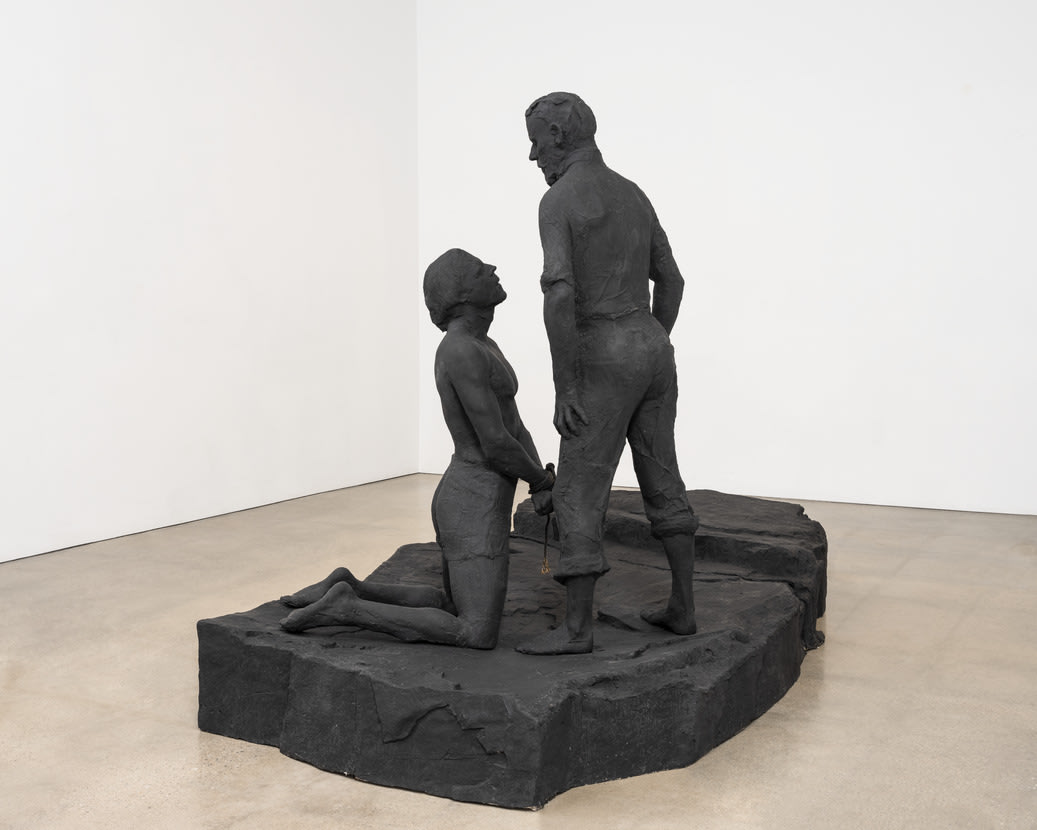
- Artist/Maker:
- George Segal
- Bio:
- American, 1924-2000
- Title:
- Abraham and Isaac (in Memory of May 4, 1970, Kent State University)
- Date:
- 1978
- Medium:
- Plaster, cloth, rope, metal, and acrylic paint
- Dimensions:
- 77 × 114 5/8 × 62 1/2 in. (195.6 × 291.1 × 158.8 cm)
- Credit Line:
- Gift of the George and Helen Segal Foundation
- Accession Number:
- 2013-15
Not On View
On May 4, 1970, the Ohio National Guard was called to the Kent State University campus. This was in response to several days of mass student protest against the escalation of the Vietnam War. In the ensuing confrontation, the Guard opened fire on the students, killing four and wounding nine. The official government investigation concluded the shootings were unjustified. This use of military force against civilians resonated throughout the mass media and led to demonstrations across the country.
The sculptor George Segal was commissioned in 1978 to create a memorial for this event. He turned to an episode from the Hebrew Bible in which God commands Abraham to sacrifice his son, Isaac, to show his devotion, but stays his hand at the last moment. Segal chose his fellow artist Lucas Samaras as the model for Abraham and Alexander Tsiaras, a student, for the kneeling Isaac. Segal used this passage from Genesis as an allegory for the conflict between the generations and a commentary on the moral failure of the American government with respect to both Vietnam and the young protesters. These biblical personas, according to the artist, “call on older people who have the power of life and death over their children to exercise love, compassion, and restraint.” In the 1980s Segal began to paint his figures black. Here, the shift underscores the work’s role as a funerary monument.
The sculptor George Segal was commissioned in 1978 to create a memorial for this event. He turned to an episode from the Hebrew Bible in which God commands Abraham to sacrifice his son, Isaac, to show his devotion, but stays his hand at the last moment. Segal chose his fellow artist Lucas Samaras as the model for Abraham and Alexander Tsiaras, a student, for the kneeling Isaac. Segal used this passage from Genesis as an allegory for the conflict between the generations and a commentary on the moral failure of the American government with respect to both Vietnam and the young protesters. These biblical personas, according to the artist, “call on older people who have the power of life and death over their children to exercise love, compassion, and restraint.” In the 1980s Segal began to paint his figures black. Here, the shift underscores the work’s role as a funerary monument.
Information may change as a result of ongoing research.